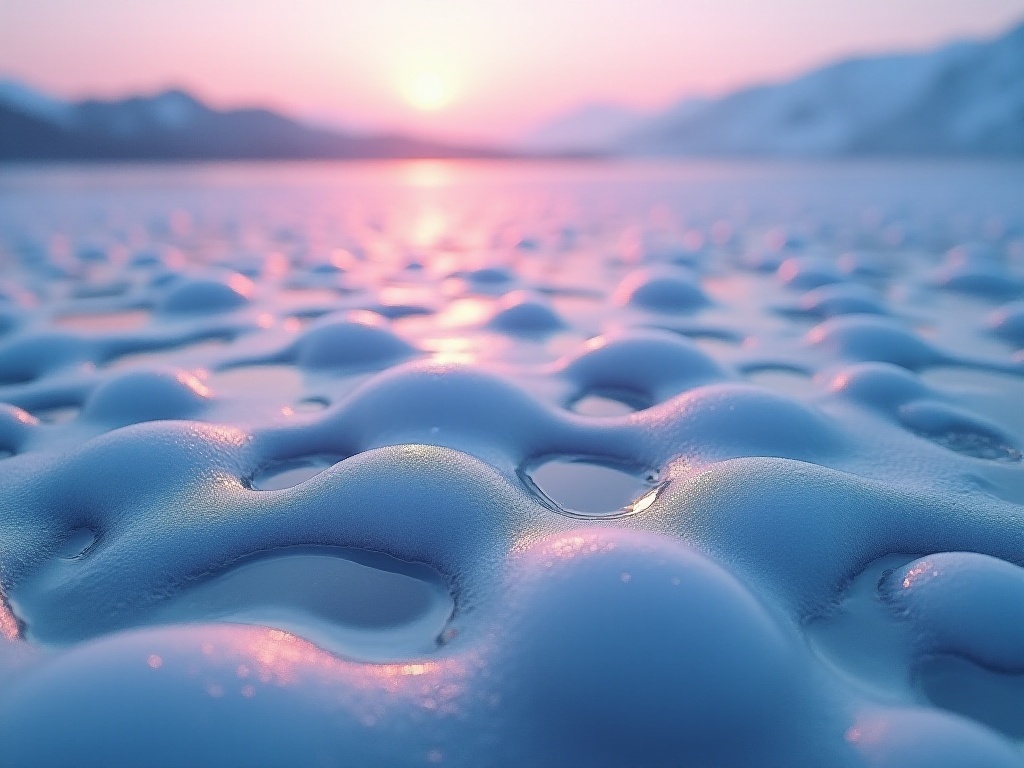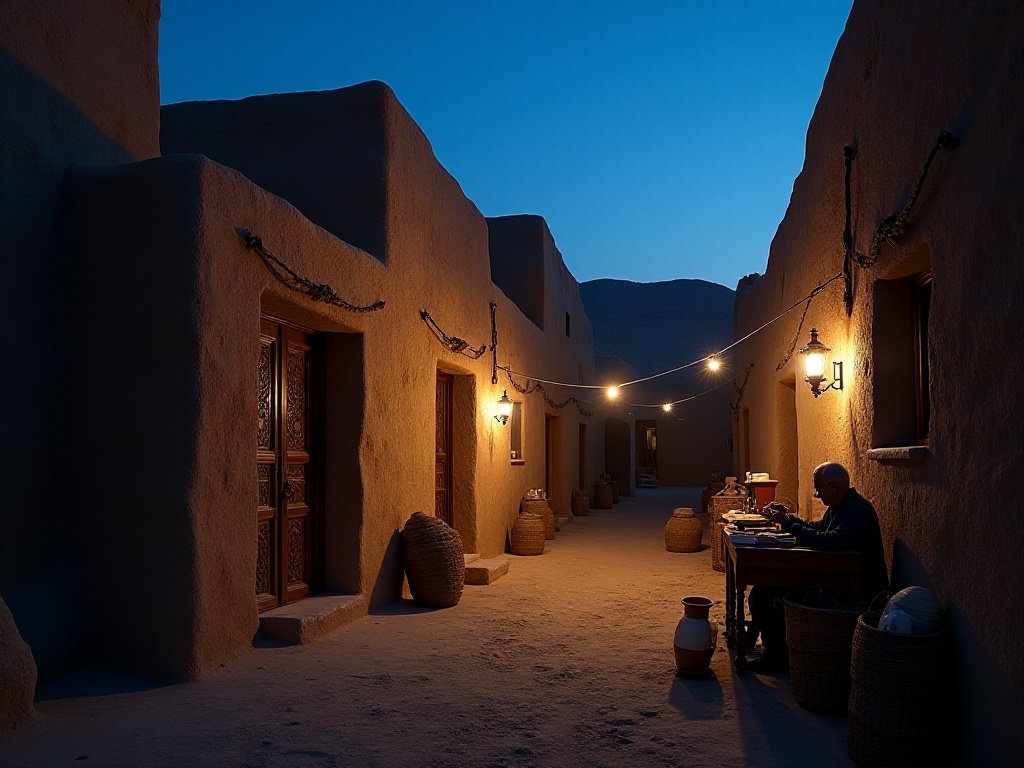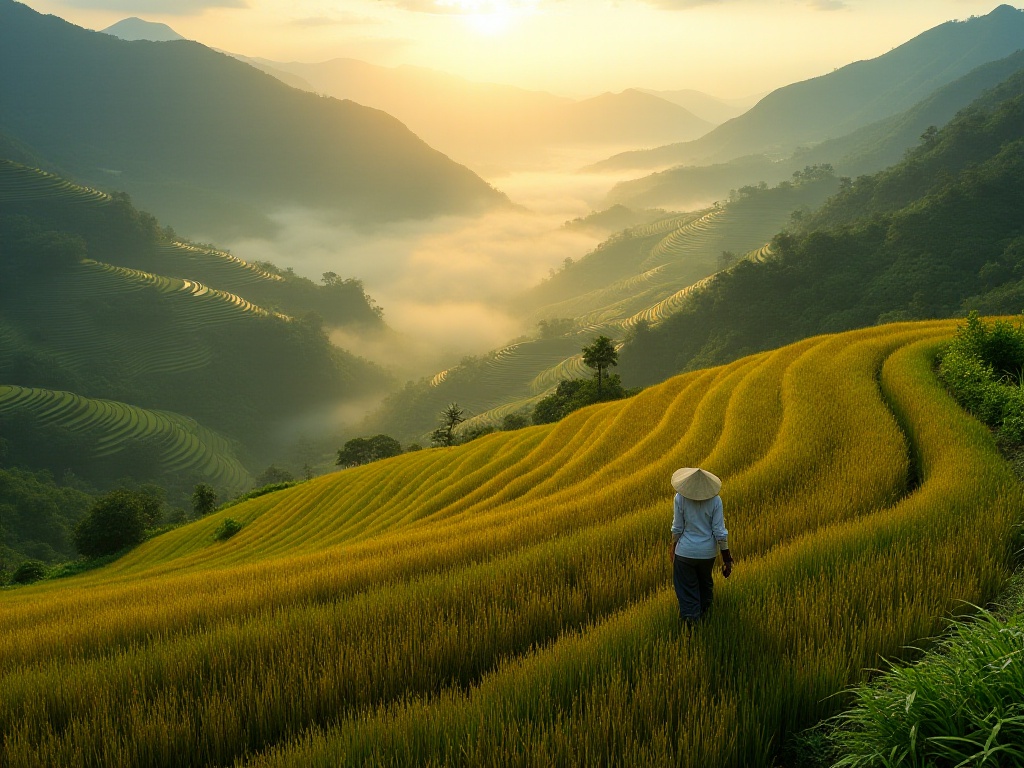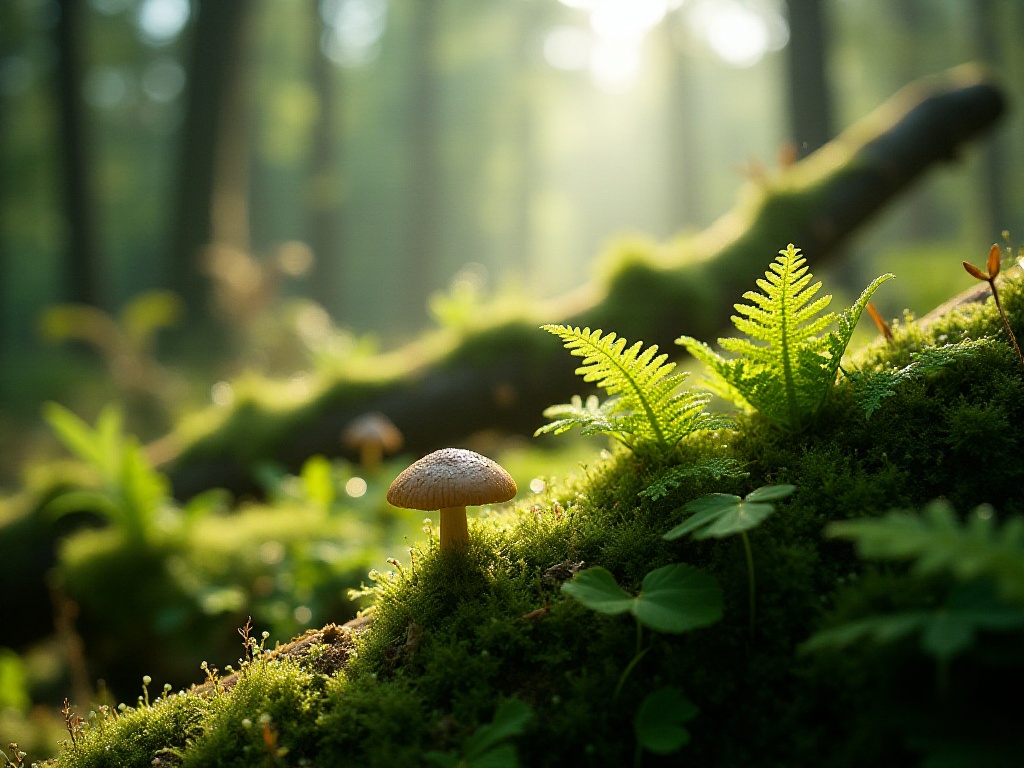The first time I picked up a camera remains vivid in my memory. I remember my trembling fingers pressing the shutter, afraid to miss any spectacular moment. As a novice landscape photographer, I was instinctively drawn to magnificent mountain sceneries, wanting to capture every grand vista in my camera.
To be honest, in the beginning, like most novice photographers, I believed bigger scenes and wider compositions were better. At every scenic spot, my first priority was finding the best position to capture the entire scene. Until that winter morning, when I spent half a day crouched by the Merced River in Yosemite, did I truly understand: the most touching landscapes often hide in inconspicuous details.
At that moment, it was as if I opened a new door, discovering a completely different world of photography. Since then, I've learned to observe everything from different perspectives, gradually discovering endless charm in the microscopic worlds we often take for granted.
When thinking of Yosemite, the first images that come to mind are undoubtedly the familiar landmarks. Like the majestic Half Dome, the towering El Capitan, or the magnificent Yosemite Falls. Indeed, these are breathtaking natural wonders, but today, I want to take everyone into a different Yosemite, to explore the delicate world that many overlook.
I'll never forget that morning in January 2024. The thermometer showed -10 degrees Celsius, with howling winds that seemed to freeze people solid. While most tourists were still enjoying sweet dreams in their warm hotel rooms, I had already shouldered my heavy camera bag and arrived at the Merced River at dawn.
A layer of crystal-clear thin ice floated on the river surface, like an artwork meticulously carved by nature. When the first ray of sunlight pierced through the tree branches onto the ice surface, I was amazed. Those seemingly ordinary ice layers refracted such dreamlike light under the sun, as if the entire world was shrouded in a mysterious veil.
The ice crystals took countless forms, some like delicate lace edges, others like geometric patterns in abstract paintings. Each ice crystal was a unique piece of art, telling its own story. When I lay on the ground, pointing my camera lens at these tiny ice crystals, it felt like entering a whole new world. At that moment, I was deeply captivated by this microscopic world, completely immersed in the process of finding and recording these exquisite scenes.

When it comes to photographing such a microscopic world, many photography enthusiasts might feel at a loss. Actually, choosing the right equipment is the first and most crucial step. For this shoot, I used a Canon EOS R5 camera with a 100mm macro lens.
Some might ask, why not use a wide-angle lens? After all, Yosemite's landscape is so magnificent, and a wide-angle seems better suited to show its grandeur. However, when we turn our attention to the microscopic world, we need a lens that can reveal more details with greater precision. A macro lens is like our microscope for observing this world, helping us discover those intricate details that are hard to capture with the naked eye.
A tripod plays a vital role in this type of shooting. I chose a carbon fiber tripod, which is not only lightweight and portable but also very stable. When shooting in cold weather, hand tremors are inevitable, and a tripod can effectively solve this problem.
Additionally, a remote shutter release is essential equipment. Many might think it's unnecessary, but in macro photography, even slight vibrations can affect image sharpness. Using a remote release can effectively reduce the vibration caused by pressing the shutter, helping us capture sharper photos.
Besides this basic equipment, I also prepared some auxiliary tools. For example, warm gloves (but choose ones that allow flexible camera operation), a waterproof mat (as you often need to lie on the ground to shoot), and some lens cleaning tools. In cold environments, lenses can easily fog up, so keeping them clean is important.
For memory cards, I prepared several high-speed cards with large capacity. When shooting subjects like ice crystals, it often takes multiple attempts to find the best composition and exposure parameters, so adequate storage space is necessary. I also brought several fully charged batteries. In low temperatures, battery life decreases significantly, so having several spare batteries is essential.

When photographing microscopic worlds like ice crystals, attention to many details is crucial. First is aperture selection, one of the most basic and important parameters. I usually set the aperture between f/11 and f/16, a range that ensures sufficient depth of field to keep the entire ice crystal sharp and clear.
However, note that smaller apertures aren't always better. If the aperture is too small, like f/22, although the depth of field increases, diffraction might reduce overall image sharpness. So you need to find a balance between depth of field and sharpness.
Regarding shooting angles, this might be the part that tests a photographer's patience and creativity the most. Many might think shooting ice crystals is as simple as pressing the shutter while pointing at the ice surface, but in reality, finding the best shooting angle often requires constant trial and adjustment.
I often lie on the ground, sometimes even placing the camera on the ice surface (with proper waterproofing, of course). Sometimes, to capture the perfect composition, I might try dozens of different angles in the same spot. Though tiresome, it's all worth it when you finally find that perfect angle.
Light usage is also crucial. When shooting ice crystals, I particularly like choosing early morning light. The sunlight is softer then, and when it shines through tree branches onto the ice surface, it can create very dreamy effects. Sometimes, I use backlight shooting, letting sunlight pass directly through the ice crystals to create more dramatic visual effects.
Focusing is another issue requiring special attention. In macro photography, due to the very shallow depth of field, accurate focusing becomes particularly important. I usually use live view function, magnifying the image to ensure focusing accuracy. Sometimes, I also use focus stacking technique, taking multiple photos with different focus points, then combining them in post-processing to achieve overall sharpness.
Exposure compensation can't be ignored either. When shooting highly reflective subjects like ice crystals, the camera's metering system might be deceived, leading to inaccurate exposure. I usually slightly increase exposure compensation to ensure ice crystal details aren't lost in shadows. But be careful not to overexpose, or you'll lose the ice crystals' texture.

Many people misunderstand landscape photography post-processing, thinking it's about maximizing saturation and contrast. However, good post-processing should be refined and restrained, especially when processing photos of microscopic worlds, where maintaining image authenticity is crucial.
When processing these ice crystal photos, my principle is to maintain the natural feel of the image. First is basic adjustment of the RAW files, including fine-tuning white balance to ensure the image's color temperature isn't too cold or warm. Then appropriately brightening shadow details to make ice crystal textures more visible.
Contrast adjustment is also important but must be moderate. I usually slightly increase contrast to enhance the ice crystals' layering, but never exaggerate it. Excessive contrast adjustment makes the image look fake, losing its natural beauty.
In terms of sharpening, I'm very cautious. Although appropriate sharpening can enhance image clarity, over-sharpening leads to unnatural edge effects. I usually use local sharpening, only moderately sharpening areas that need emphasis.
Color processing also needs special attention. Although ice crystals refract rainbow-like colors in sunlight, don't overemphasize these colors in post-processing. Appropriate saturation adjustment can make the image more attractive, but remember, natural is most beautiful.
Additionally, I pay attention to overall image balance. Sometimes certain areas' brightness or contrast might need local adjustment to guide viewers' vision. But these adjustments must be very subtle, making post-processing traces unnoticeable.
From this shoot, I'm most satisfied with a photo capturing the moment ice crystals slowly melted. It was around eight in the morning, the sun had risen, and temperature was rising. Morning light penetrated the translucent ice surface, refracting rainbow-like light, like a carefully created abstract painting.
This photo's uniqueness lies in perfectly recording the ice crystals' melting process. You can see tiny water droplets on the ice crystal surface, twinkling in sunlight, adding dynamic beauty to the entire image. Light passing through ice crystals creates amazing optical effects, as if opening a fantastic world.
I later enlarged this photo and framed it, hanging it in my living room. Every time I see it, it reminds me of that cold but surprising morning. It's not just a photo, but an eternal moment, recording nature's most beautiful moment.
Besides this most satisfying work, I also photographed many ice crystals in different forms. Some look like delicate snowflake patterns, others like complex geometric structures. Each photo shows the unique beauty of ice crystals, telling different stories.

Through this shooting experience, I deeply realized that landscape photography isn't just about shooting grand scenes. Sometimes, when we slow down and bend down to focus on details at our feet, we can discover more amazing beauty.
During shooting, don't be afraid to try different angles and compositions. Even if this means lying on the ground or making seemingly strange moves. Remember, true photographers aren't afraid of "looking silly" because they know it's worth it to capture good work.
Also, patience is very important. Sometimes you might need to wait a long time for perfect light, or try multiple times to find the best composition. But these waits and attempts are worth it because they'll ultimately help you create unique works.
Rather than following the crowd, develop your own style. On the photography path, imitating others' work can be a learning start, but ultimately you need to find your own perspective and expression.

This Yosemite trip gave me a deeper understanding of photography. True photography isn't about what camera you use, but how you observe this world. Sometimes, the most beautiful scenery is right at our feet, we just often overlook its existence.
Next time you travel, try slowing down and using a macro lens to discover beauty we often take for granted. Perhaps you'll find that in those minute details, there's equally amazing scenery.
Photography is an art requiring constant learning and exploration, and everyone can find their own way of expression in this process. Hope my experience gives you some inspiration, helping you find more joy on your photography journey.
Have you had any interesting photography discoveries recently? Have you ever gained new insights about photography from an unexpected discovery? Looking forward to hearing your stories and experiences.
 Previous
Previous
